All About Personal Protective Equipment Or PPE
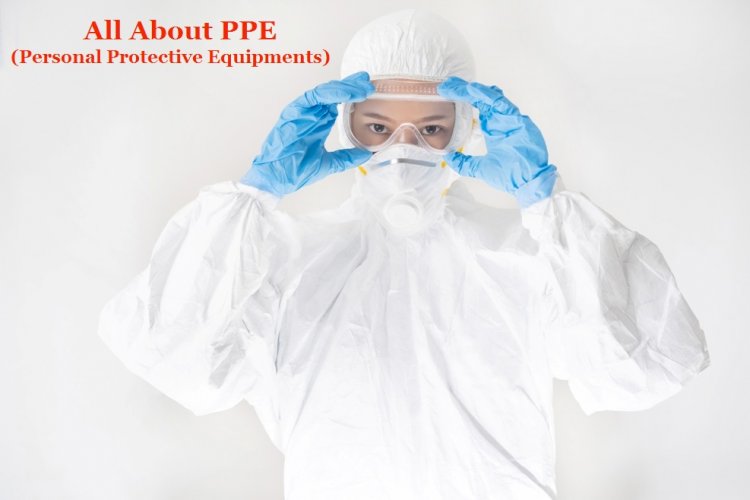
PPE or personal protective equipments is a protective suit which include gowns, helmets, face shield, eye protection or goggles, masks or respirators, gloves, head cover and rubber boots etc that protect wearer’s body from injury and infection. It protects against physical, electrical, heat, chemical, biohazards and airborne particulate. The main purpose of PPE is to reduce exposure to potential hazards. PPE has the serious limitation that it doesn’t eliminate the hazard at the source and may result in employee being exposed to the hazard if the equipment fails.
Components of PPE
Respirators
Respirator is a devise designed to protect the wearer from inhaling hazardous atmosphere which include fumes, vapors, gases and airborne microorganisms and droplets.
There are two types of respirators:
Air-purifying respirator: - In this type of respirator, air is obtained by filtering contaminated air. These respirators range from inexpensive, single use, disposable facemasks to reusable models with replaceable cartridges called gas mask.
Air supplied respirator: - in which an alternate supply of breathable air is delivered. These respirators have different types of technique to reduce or eliminate noxious airborne contamination.
Equipments for Skin Protection:-
These equipments create a barrier between skin and the external agents. It mainly includes gown with a long sleeves, aprons, head covering, face shield, gloves and shoe cover. Because much work is done by hands so gloves are essential item in skin protection. Gloves commonly used as PPE include rubber gloves, cut resistant gloves, chainsaw gloves and heat resistant gloves.
First of all health worker should identify risk assessment. The risk of exposure and type of exposure should determine how infection can be transmitted in body. Direct contact can occur through broken skin or mucous membrane area like eyes, nose, and mouth.
Mainly risk agents are contaminated blood, body fluids of infected person, urine, saliva, respiratory droplets, sweat, feces, vomit, breast milk and semen.
Once the hazard and the risks of exposure are identified, gown and overall selection can be guided by current scientific understanding of how protective clothing materials provide protection against risk agents. Protection depends on several other factors like following:
- Physical and chemical properties of fabric.
- Shape, size and other characteristics of microorganism.
- Characteristic of the carriers.
- External factor like physical, chemical and thermal stresses.
Eye and face protection equipments:-
Includes face shields and goggles. These protect the mucous membranes in your eyes from blood and other bodily fluids. If these fluids make contact with the eyes, germs in the fluid can enter the body through the mucous membranes.
Goggles: - it provides better protection than safety glasses. These are very effective in preventing eye injury from chemical splashes, dusty environment and contaminated airborne and blood-borne agents.
Face shield: - it provides protection against infectious materials. A face shield protects the wearer partial or entire face and the eyes from hazards. Face shield always used with spectacles or goggles. There are many kind of face shields available depend on material use and size (diameter, resistant). Two types of materials mainly used in face-shield:
Polycarbonate: they have excellent impact resistance, optical quality, heat resistance and normal chemical resistance.
Cellulose acetate: they provide normal impact resistance, optical quality, heat resistance and good chemical resistance.
Hearing protection equipments:-
PPE for hearing protection contain earplugs and earmuffs. Health workers who are regularly exposed to noise levels above the NIOSH recommendation should be worn hearing protection, as they are a low-cost intervention.
How to use PPE:-
The process of wearing a PPE is called donning. And process of removing it safely is called doffing.
Donning or How to put on PPE
Step 1-
- Perform hand hygiene
Step 2-
- Identify hazards and other risk factors. Gather the necessary PPE
- You should have a buddy or a mirror.
- You should know how to deal with waste.
Step 3-
Put on gown:
- Fully cover torso from neck to knee, arms to end of wrist, and around the back.
- Then fasten in back of neck and waist.
Step 4-
Mask or respirator:
- secure ties or elastic bands at middle of head and neck
- Fit flexible band to Nose Bridge
- Fit snug to face and below chin
- Fit-check respirator
Goggles or face shield:
- Place over face and eyes and adjust to fit.
Note- if performing an aerosol-generating procedure (aspiration of respiratory tract, intubation, resuscitation, bronchoscopy, autopsy) a particulate respirator (NIOSH certified N95) should be used in combination with a face shield or an eye protection. Always go for seal check if using a particulate respirator.
Step 5-
Gloves:
- Extend to cover wrist of isolation gown.
- Use safe work practice to protect yourself and limit the spread of contamination
- Keep hands away from face
- Limit surfaces touched
- Change gloves when torn or heavily contaminated
- Perform hand hygiene frequently.
Doffing or How to remove PPE safely
There are many ways to safely remove PPE without contaminating your clothing, skin or mucous membranes with infectious PPE. Here are two ways giving below. Always remember remove all PPE before exiting the patient room except a respirator. Remove the respirator after leaving the room and closing the door.
Example 1
Step 1-
Gloves:
- Outside of gloves are contaminated
- If your hands get contaminated during gloves removal, immediate wash your hands or use an alcohol based hand sanitizer.
- Using a gloved hand, grasp the palm area of the other gloved hand and peel off first glove.
- Hold removed glove in gloved hand
- Slide fingers of ungloved hand under remaining glove at wrist and peel of second glove over first glove.
- Discard gloves in a waste container.
Step 2-
Goggles and face shield:
- Outside of goggles or face shield are contaminated.
- If your hands get contaminated during goggles and face shield removal, immediate wash your hands or use an alcohol based hand rub.
- Remove goggles or face shield from the back by lifting head band or ear pieces.
- If the item is reusable, place in designated receptacle for reprocessing. Otherwise discard in a waste container.
Step 3-
Gown:
- Gown front and sleeves are contaminated.
- If your hands get contaminated during gown removal, immediate wash your hands or use an alcohol based hand rub.
- Unfasten gown ties, taking care that sleeves don’t contact your body when reaching for ties.
- Pull gown away from neck and shoulder, touching inside of gown only.
- Turn gown inside out.
- Fold or roll into a bundle and discard in a waste container.
Step 4-
Mask or respirator:
- Front of mask/respirator is contaminated so do not touch.
- If your hands get contaminated during mask or respirator removal, immediate wash your hands or use an alcohol based hand rub.
- Grasp bottom ties or elastic of the mask/respirator, then the ones at the top, and remove without touching the front.
- Discard in a waste container.
Step 5-
Wash your hands with soap and water or use alcohol based hand rub immediate after removing all PPE.
Example 2
This is another way to safely remove PPE
Step 1-
Gown and gloves:
- Gown front and sleeves and the outside of gloves are contaminated.
- If your hands get contaminated during gown or gloves removal, immediate wash your hands or use an alcohol based hand rub.
- Grasp the gown in the front and pull away from your body so that the ties break, touching outside of gown only with gloved hands.
- While removing the gown, fold or roll the gown inside-out into a bundle.
- As you are removing the gown, peel off your gloves at the same time, only touching the inside of the gloves and gown with your bare hands. Place the gown and gloves into a waste container.
Step 2-
Goggles and face shield:
- Outside of goggles or face shield are contaminated.
- If your hands get contaminated during goggles and face shield removal, immediate wash your hands or use an alcohol based hand rub.
- Remove goggles or face shield from the back by lifting head band or ear pieces.
- If the item is reusable, place in designated receptacle for reprocessing. Otherwise discard in a waste container.
Step 3-
Mask or respirator:
- Front of mask/respirator is contaminated so do not touch.
- If your hands get contaminated during mask or respirator removal, immediate wash your hands or use an alcohol based hand rub.
- Grasp bottom ties or elastic of the mask/respirator, then the ones at the top, and remove without touching the front.
- Discard in a waste container.
Step 4-
Wash your hands with soap and water or use alcohol based hand rub immediate after removing all PPE.









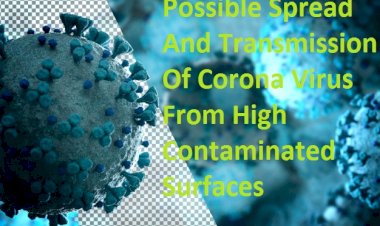

















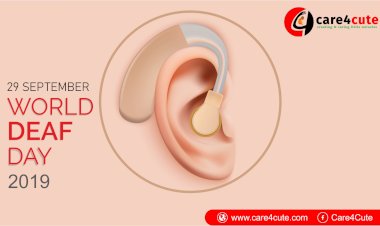



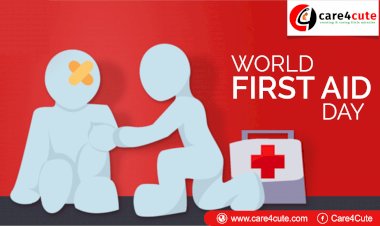
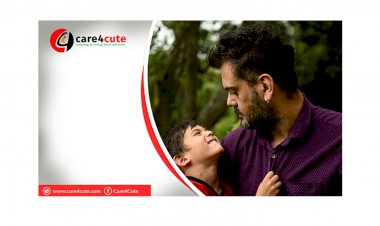

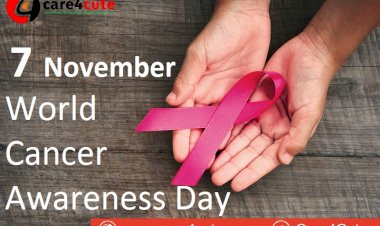
Comments (0)